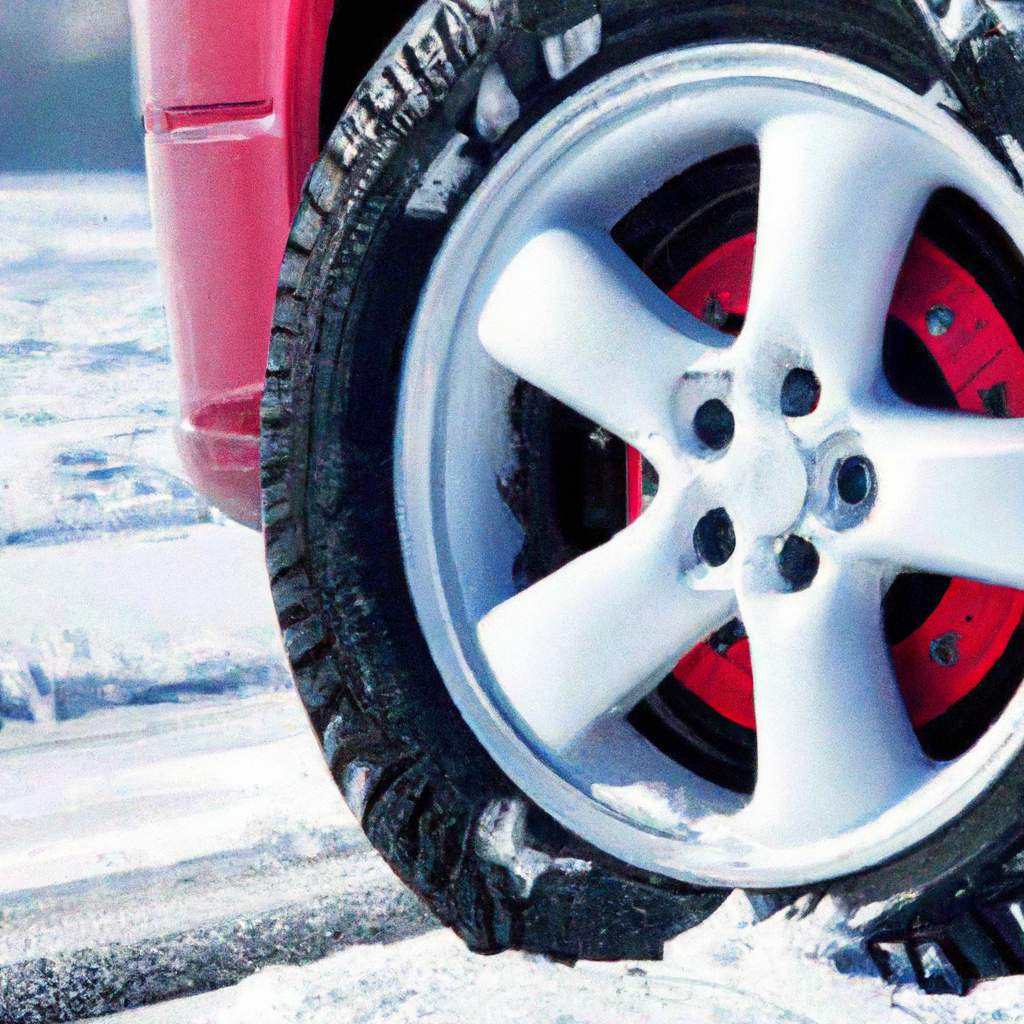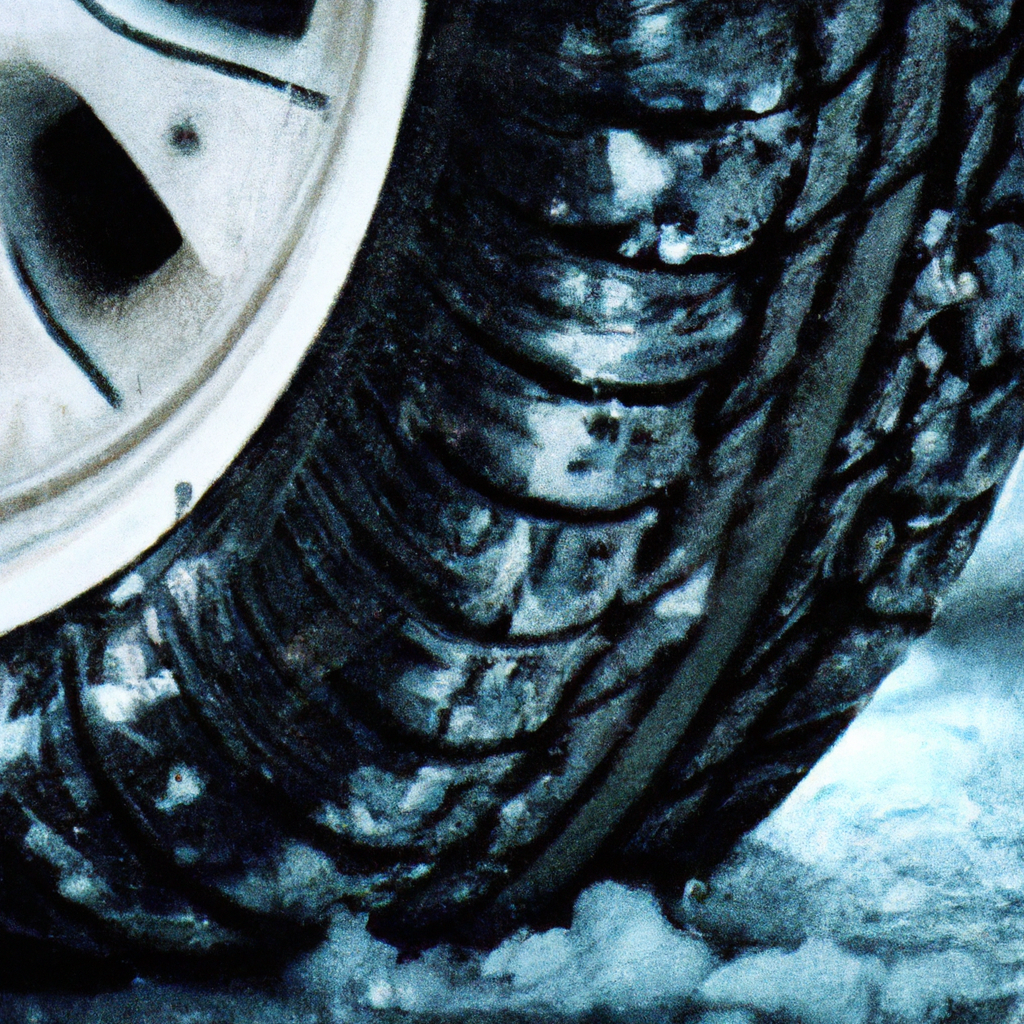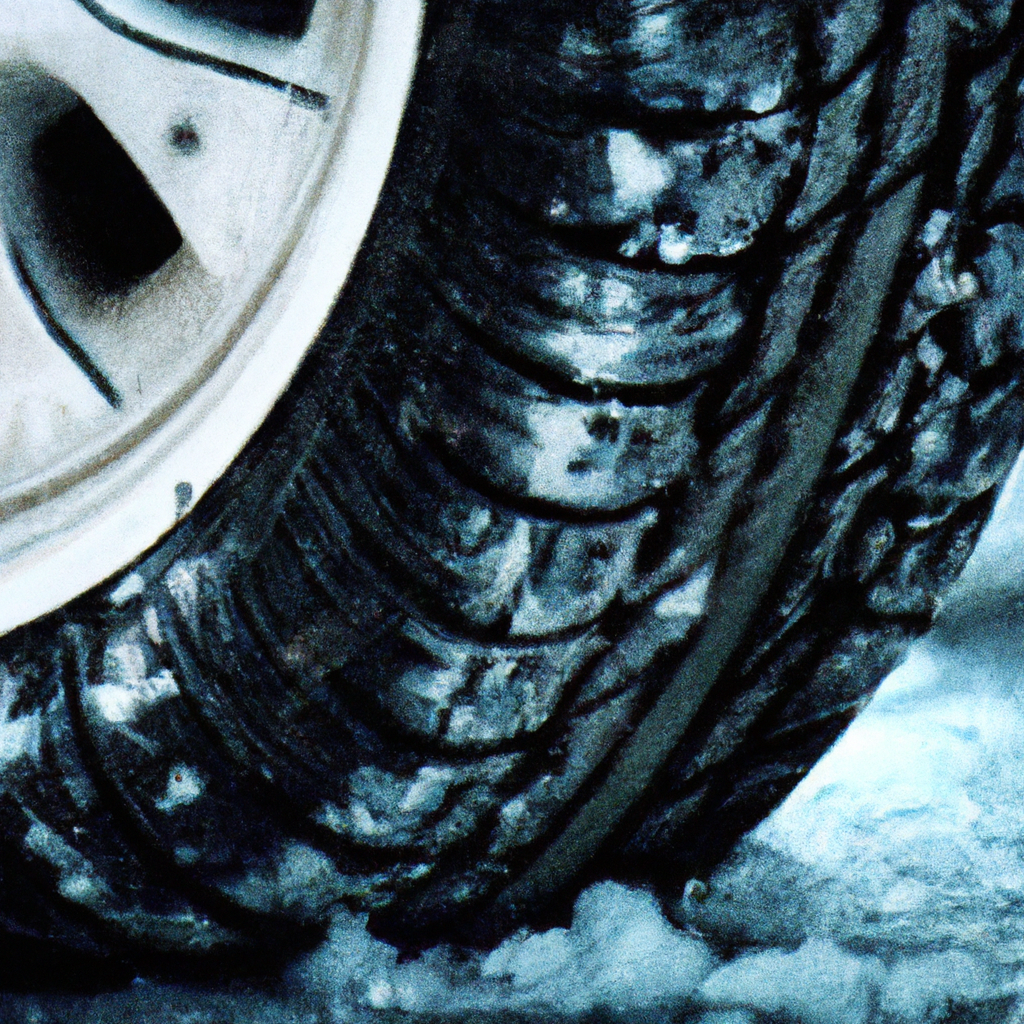As the winter season approaches, you may find yourself wondering how to best protect your wheels from the harsh conditions that lie ahead. From icy roads to salted pavements, the winter months can pose a significant threat to your vehicle’s wheels. But fear not, as there are several measures you can take to safeguard your wheels and ensure a smooth, trouble-free ride throughout the colder months. Whether it’s investing in winter tires, regularly cleaning and maintaining your wheels, or practicing safe driving habits, this article will provide you with all the necessary tips and tricks to keep your wheels in pristine condition all winter long. So sit back, relax, and let us show you how to keep those wheels rolling smoothly, no matter what Mother Nature has in store.

Choosing the right tires
When it comes to navigating through winter road conditions, choosing the right tires is crucial for your safety and the performance of your vehicle. Understanding winter tire specifications is the first step in making an informed decision. Winter tires are designed with special tread patterns and rubber compounds that provide improved traction on snow and ice. Look for tires that have the Three-Peak Mountain Snowflake symbol on the sidewall, as this indicates that they have met the industry standards for winter performance.
Another option to consider is all-season tires. These tires are designed to provide adequate traction in various road conditions, including dry, wet, and light snow. While all-season tires are a versatile choice, they may not offer the same level of grip and control as dedicated winter tires. If you live in an area with mild winters or do not frequently encounter heavy snowfall, all-season tires might be a suitable choice for you.
Checking tire tread depth
Regardless of which type of tires you choose, it is important to regularly check the tread depth. Tread depth plays a significant role in maintaining traction on slippery roads. As tires wear down over time, their ability to grip the road decreases. To check the tread depth, you can use a tread depth gauge or the tried-and-true “penny test.” Simply insert a penny into the tread grooves with Lincoln’s head facing down. If you can see the top of Lincoln’s head, it is time to replace your tires as the tread depth is too shallow to provide adequate traction.
Considering tire chains or studs
In some regions where heavy snowfall and icy conditions are prevalent, tire chains or studs can provide an extra layer of traction and stability. Tire chains are metal chains that wrap around the tires and improve grip on snow and ice. It is important to follow the manufacturer’s instructions when installing and using tire chains to ensure proper fit and avoid damage to your tires or vehicle. Studded tires have metal studs embedded in the tread, providing excellent traction on icy roads. However, studded tires may not be legal or allowed in all areas, so be sure to check the local regulations before considering this option.
Preparing your wheels for winter
Once you have chosen the right tires for winter driving, it is essential to prepare your wheels to withstand the harsh conditions. Cleaning your wheels before winter is a good practice to remove any dirt, grime, or brake dust that may have accumulated. This helps to maintain the appearance of your wheels and prevents corrosive substances from causing damage.
Applying a protective wax or coating to your wheels can provide an extra layer of defense against winter elements such as snow, salt, and ice. These protective products create a barrier that helps to repel moisture and prevent the formation of rust or corrosion. Be sure to choose a wax or coating specifically formulated for wheels, as they are designed to withstand the high temperatures generated by braking.
Using wheel covers or liners is another option to consider. These accessories act as a shield, protecting your wheels from direct exposure to snow, ice, and road salt. They are particularly useful if you live in an area with heavy snowfall or encounter harsh winter conditions regularly.
When it comes to the material of your wheels, both alloy and steel wheels have their advantages. Alloy wheels are generally lighter and offer better performance and handling. They can also enhance the appearance of your vehicle. However, alloy wheels are more susceptible to damage from impacts and corrosion. On the other hand, steel wheels are more durable and less prone to damage, making them a solid choice for winter driving. Consider your driving needs and local climate to determine the most suitable type of wheels for your vehicle.

Maintaining proper tire pressure
Proper tire pressure is essential for safety, fuel efficiency, and optimal tire performance. As temperatures drop during winter, the air inside your tires contracts, causing the tire pressure to decrease. Understanding the impact of temperature on tire pressure is crucial in maintaining the correct inflation level.
Regularly checking tire pressure is a simple yet effective practice. Use a reliable tire pressure gauge to measure the pressure when the tires are cold, as driving warms up the tires and can give inaccurate readings. Refer to your vehicle’s manual or the tire manufacturer’s specifications to determine the recommended tire pressure. Remember to check the spare tire as well.
Avoiding potholes and road hazards
Winter road conditions can be treacherous, and one common hazard to watch out for is potholes. Potholes can damage your wheels, tires, and suspension components, leading to costly repairs. Understanding the risk of potholes and being vigilant can help you minimize the chances of encountering one.
Maintaining a safe driving distance from the vehicle in front of you is also crucial in avoiding accidents and damage to your wheels. This gives you enough time to react to sudden stops or maneuver around obstacles without the risk of colliding with them. Additionally, being cautious of road debris such as rocks, branches, or loose gravel is important. These objects can cause punctures, scrapes, or damages to your wheels if not avoided.

Safe driving practices in winter
Safe driving practices are essential in winter conditions to reduce the risk of accidents and maintain control of your vehicle. Adjusting your driving speed to the appropriate level is crucial. Driving too fast in snow, ice, or slippery conditions can lead to loss of control and accidents. Be mindful of the posted speed limits and adapt to the conditions of the road.
Avoiding quick acceleration and braking is also important. Abrupt changes in speed can cause your tires to lose traction and result in skids or spins. Gradually and smoothly apply the gas pedal or brakes to maintain control and avoid sudden movements.
Using caution on slippery surfaces is crucial for your safety. Reduce your speed when approaching turns, intersections, or shaded areas where ice is likely to form. Gentle steering inputs and avoiding sharp or aggressive turns will help maintain control of your vehicle.
Lastly, avoiding aggressive turns or maneuvers is essential. Sudden or harsh steering inputs can cause your tires to lose traction. This can result in the loss of control and potentially lead to accidents. Drive defensively and anticipate the movements of other vehicles to avoid sudden evasive maneuvers.
Regularly cleaning your wheels
Cleaning your wheels regularly, especially during winter, is vital for their maintenance and protection. Winter roads are often treated with salt and chemicals that can lead to corrosion and damage if left on the wheels for an extended period.
To remove salt and debris, use a hose or pressure washer to thoroughly rinse your wheels. Pay attention to the inner rims and hard-to-reach areas where dirt and salt can accumulate. Using a mild wheel cleaner specifically formulated for your wheels is recommended. Avoid harsh cleaners that can potentially damage the finish or protective coatings of your wheels.
Gently scrub the wheels with a soft brush or sponge to remove any remaining dirt or grime. Be cautious not to use abrasive materials that can scratch or dull the finish. Once the wheels are clean, rinse them again with water to remove any traces of cleaner.
Applying a protective wheel sealant after cleaning can help maintain the shine of your wheels and protect them from future damage. Follow the instructions on the sealant product and apply it evenly to the wheels. This creates a barrier against dirt, debris, and road chemicals, making it easier to clean your wheels in the future.

Storage tips for offseason
If you live in an area where winter is particularly harsh, and you choose to switch to dedicated winter tires, it is important to properly store your wheels during the offseason. This ensures that they stay in optimal condition and are ready for use when winter returns.
Properly cleaning and drying your wheels before storage is vital. This prevents any dirt, salt, or moisture from causing damage during the storage period. Use a wheel cleaner, sponge, and hose to thoroughly clean the wheels. After cleaning, allow them to air dry completely or use a clean towel to dry them manually.
Removing tires or raising the vehicle is another option to consider. By removing the tires, you reduce the strain on them and prevent flat spots from forming during storage. If removing the tires is not feasible, consider using jack stands to raise the vehicle off the ground and relieve the weight on the wheels.
Protecting against moisture and corrosion is crucial during storage. Store your wheels in a dry and well-ventilated area to prevent the accumulation of moisture. Consider using wheel covers or plastic wrap to protect them from dust and dirt. Applying a corrosion inhibitor spray to the wheels before storage can provide an extra layer of protection against rust.
If you have limited storage space or prefer professional assistance, considering professional storage is a viable option. Many automotive shops and specialty storage facilities offer secure and climate-controlled storage services for off-season wheels. These services ensure that your wheels are stored safely and are ready for use when the winter season arrives.
Preventing rust and corrosion
Rust and corrosion are common enemies of wheels, especially during the winter months. Regularly cleaning brake dust is vital in preventing the formation of rust. Brake dust is a mixture of metal particles and adhesives released from the brake pads when braking. These particles can be corrosive and cause damage to the wheels if not cleaned regularly.
When cleaning brake dust, avoid using harsh chemicals or abrasive cleaners. These can potentially damage the protective coatings of your wheels and accelerate the corrosion process. Instead, use a mild wheel cleaner or a mixture of mild soap and water. Gently scrub the wheels with a soft brush or sponge to remove the brake dust without causing any potential harm.
Applying a corrosion-resistant coating or wheel sealant after cleaning is an additional precaution you can take. These products create a protective barrier on the surface of the wheels, preventing moisture and corrosive substances from reaching the metal and causing damage. Regularly inspect your wheels for signs of rust, such as discoloration or bubbling paint, and address any concerns promptly.

Taking care of alloy wheels
Alloy wheels are a popular choice for their lightweight and stylish appearance. To keep them in top condition during winter, it is important to take extra care when cleaning and maintaining them.
Firstly, avoid using harsh cleaning products or abrasive materials on alloy wheels. These can scratch or damage the clear coat or paint finish, leading to corrosion or other aesthetic issues. Use a mild wheel cleaner specifically formulated for alloy wheels and a soft brush or sponge to gently clean the wheels. This helps to remove dirt, brake dust, and road grime without compromising the integrity of the wheels.
If you notice minor scratches or chips on your alloy wheels, you can repair them yourself using touch-up paint. Touch-up paint kits are widely available and come with instructions on how to properly apply the paint to the affected areas. This helps to prevent further damage and maintain the appearance of your wheels.
Using a protective wheel wax or sealant is highly recommended for alloy wheels. This provides an extra layer of protection against road contaminants, water, and winter elements. Apply the wax or sealant according to the manufacturer’s instructions, ensuring even coverage on the entire wheel surface. This protective layer makes it easier to clean your wheels and helps maintain their shine and luster.
If you are unsure about cleaning, repairing, or maintaining your alloy wheels, seeking professional alloy wheel repair services is always an option. Professionals have the expertise and specialized equipment to repair minor damages, restore the appearance of your wheels, and provide personalized advice based on your specific needs.
Consulting with a professional
While this article provides a comprehensive guide to protecting your wheels from winter road conditions, it is essential to consult with a professional for personalized advice and assistance. Tire specialists can help you select the most suitable tires for your vehicle and driving needs, taking into consideration factors such as climate, road conditions, and your specific preferences.
Getting a professional wheel alignment is important to ensure even tire wear, optimal handling, and overall vehicle performance. Proper alignment prevents premature tire wear, improves fuel efficiency, and enhances your driving experience. A wheel alignment should be performed by a qualified technician who will use specialized equipment and techniques to adjust the angles of your wheels according to the manufacturer’s specifications.
Considering professional installation of your winter tires is also worth considering. While some individuals may have the expertise and tools to install tires themselves, professional installation ensures that the tires are mounted correctly, balanced, and inflated to the proper pressure. This helps to maximize tire performance, prevent damage, and ensure your safety on the road.
Lastly, if you have any specific concerns or issues related to your wheels or winter driving, it is important to address them with a professional. They can provide valuable insights, answer your questions, and offer solutions tailored to your individual situation. Whether it is a vibration issue, unusual tire wear, or other wheel-related problems, consulting with a professional ensures that your concerns are properly addressed, and you can enjoy a safe and smooth driving experience during the winter season.
In conclusion, protecting your wheels from winter road conditions is essential for your safety, the performance of your vehicle, and the longevity of your wheels. By choosing the right tires, maintaining proper tire pressure, practicing safe driving habits, and regularly cleaning and maintaining your wheels, you can enjoy a confident and hassle-free driving experience throughout the winter season. Consulting with a professional and addressing any concerns promptly ensures that you are well-prepared and equipped to conquer the challenges of winter driving. Stay safe on the road and enjoy the beauty of winter with well-maintained and protected wheels.

